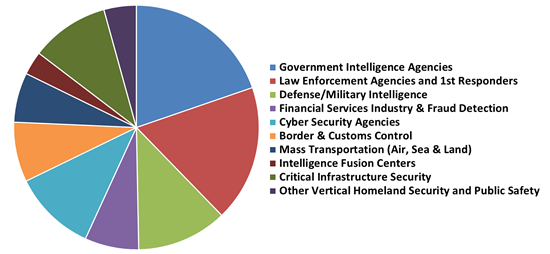In order to understand Big Data, let’s start with:
What is Data?
Data is a piece of information that includes symbols, quantities, and characters on which a computer performs its operations. Data can be stored and transferred as electric signals, magnetic signals or any other suitable form.
What is Bigdata?
Big Data is also data, but the volume of data is very high. Big Data is used to describe a collection of data that is huge in size and increases exponentially with time. This data is so large that none of the traditional data management tools are able to store and process it.
Applications of Bigdata?
Big Data in Social Media and Entrainment Industry
In today’s time, everyone has mobile phones and other digital gadgets, and so the generation of large data is obvious because everyone uses social media and entrainment channels.
Benefits extracted from Big Data in media and entrainment industry: –
- It predicts the interests of audiences.
- An effective advertisement is achieved.
- And getting reviews from customers.
Amazon Prime that offers videos, music in a one-stop-shop is also using big data.
Big Data in Healthcare Industry

Big Data in Government Sector

Any country government comes with a large amount of data on an almost daily basis. This is because they keep track of all records and databases of their citizens, their growth, geography resources, and survey information. And all this is Big Data.
- It makes decision fasters and informed in terms of various political programs.
- It is used in caching tax evaders.
FDA uses Big data to identify the design patterns in order to identify the expected or unexpected occurrences of infectious diseases.
Types of Big Data
There are three types of Big Data
Structured Data
Data that can be accessed, stored and processed in a fixed format is structured data. It refers to all the data which can be stored in database SQL in the table with rows and column which in turns represent a value.
Unstructured Data
Unstructured Data is data with an unknown format. It represents 80% of the data. It includes photos, videos, word processing documents, web pages and many more business documents. This data does not fit well in relational databases.
Semi-Structured Data
This data contains both forms of the above data. This data is also not resided in a relational database but has some organization of data that helps to analyze.
Example XML and JSON are semi-structured data.
Future Trends of Bigdata
Big Data Analysis is astonishingly transforming the organizations and industries in today’s date. Technology has made a huge difference where businesses are adopting it to go beyond the traditional ways of data handling. The strength of data analytics is positively embraced by enterprises across the globe. It is making some remarkable changes in the decision-making landscape for branding and recruitment.
IoT With Data Analytics
By the year 2020, we can expect to witness 20 billion active IoT devices which will subsequently collect more data for analysis. In big tech organization where IoT devices have already been embraced in big operations, the leaders are seeing beyond it to also implement the assisting technology to run capable data analytics.
Quantum Computing
The next computing technology ready to strike, quantum computers. These are the powerful computers that have principles of Quantum Mechanics working on their base. One thing is for sure, it will push the traditional computing and do analytics in an unthinkable manner. Predictions of data are incomplete without quantum computing.
Conversational Analytics and Natural language Processing
Another trend that we should all looking in forwarding 2020 is the forecast that voice or natural language processing will be used to generate up to 50% of analytical queries This requires analytics toll to be user-friendly and easy to access.
The advantage of this is that members of the organization will be able to analyze complex data combinations with the help of an easy to use analytics platform. Using this we just have to simply search, and the result will be displayed.
Machine Learning and Cloud
As cloud storage has already become quite a popular means of safely storing the digital files, around 30 percent of cloud vendors are using third party solutions in form of Iaas in place of running their infrastructures. This can be increased to 60-70 percent in the incoming next 3 years. The projections for 2022 state that large-scale cloud providers like Apple, Microsoft, and Goggle will be making use of Cloud machine learning to gain 20 percent of the share of the market in platforms for data science.
In-Memory Computing
Another trend that we are looking forward to in 2020 is in-memory computing (IMC). Since the cost of memory has been decreased in recent years, in-memory technology which is a mainstream technology has become the only solution for a variety of benefits of analysis.
The complexity and cost of taking up IMC are being reduced by the new memory technologies, a new memory tier has been introduced between NAND flash memory and dynamic random -access memory.
This provides an effective mass-memory to support high-performance workloads. This is highly important to organizations as they require high-performance CPUs, quicker storage, and large memory quantity.
Leave A Comment